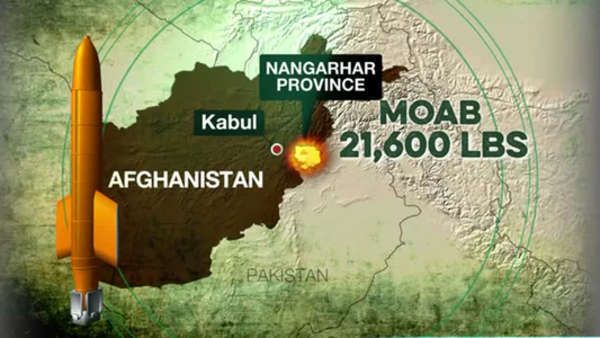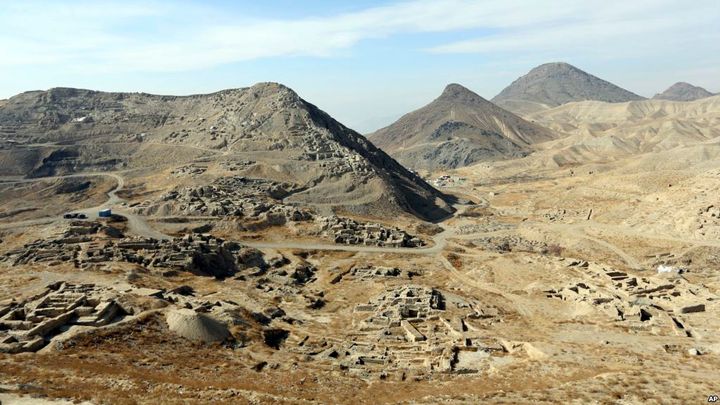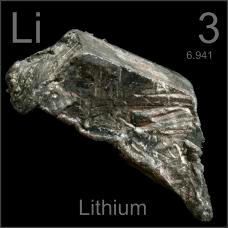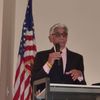
MOAB Target in Eastern Afghanistan
With the arrival of spring the Taliban come out of hibernation and the war tempo in Afghanistan picks up. This year, however, what made headlines was the use of the most powerful nonnuclear bomb in the US arsenals. The bomb, called Massive Ordinance Air Blast (MOAB) and also dubbed the Mother of All Bombs, was dropped over eastern Afghanistan on April 13th. According to the US military and Afghan officials, the aim of the attack was to destroy a network of caves and tunnels used by Islamic State of Khorasan (IS-K). IS-K is a branch of Islamic State in Syria and Iraq (ISIS) and have pledged allegiance to its founder Abu Bakr Al Baghdadi. The terrorist group ISIS refers to Afghanistan as “Khorasan,” a name given to this region when the Arabs invaded the area in the 7th century CE. IS-K has established a foothold in Afghanistan since 2015. Its ranks have grown with disgruntled former Taliban and fighters from Pakistan, India, Uzbekistan and elsewhere. IS-K competes with the Taliban for influence in Afghanistan.
IS-K has carried out numerous attacks and other atrocities against military and civilian targets in Afghanistan. But they have also sustained losses due to Afghan and US forces operations including the recent MOAB attack in the Achin district of Nangarhar province. Although the US commander in Afghanistan Gen. Nicholson called it a tactical attack against a specific target, there are other reasons for the use of this bomb.
President Trump had said during the 2016 campaign that he would bomb the sh*t out of ISIS. This bomb was specifically used against ISIS, although its effectiveness over the long term is debatable. Achin is a remote area between Afghanistan and Pakistan, and therefore sparsely populated. Using MOAB in such an area limits collateral damage. Bombing the sh*t out of ISIS in Syria, Iraq or another part of Afghanistan would result in huge civilian casualties, which is politically untenable. The use of such a huge bomb would also send a signal to the Taliban and other belligerents around the world that the US means business.
The Taliban have not yet officially announced this year’s spring offensive, but both the Afghan government and the international forces fear it could be another deadly year. In the past the Taliban would announce their offensive by named operations such as Omari, Azam, and so on. The fighting pattern in Afghanistan, at least since the Taliban became resurgent circa 2006, has followed a predictable pattern: a fighting lull in the winter due to inclement weather and the resumption of Taliban attacks in the spring. However, since 2016 the pattern has not been as predictable as the Taliban continue relentless military pressure on the Afghan National Security Forces (ANSF). It is curious that more than a month into the spring season they haven’t announced a new spring offensive, but not so surprising as the Taliban will grab headlines any time they can. Has the use of MOAB been a factor? It’s doubtful.
The world is still waiting to hear the Trump doctrine relative to the longest American war, Afghanistan. The US commander and Afghan officials are in favor of a US troop surge in Afghanistan again. Afghan officials have even been dangling a carrot to entice President Trump for more US involvement. Afghanistan has vast untapped exotic metals and other minerals. Among them is lithium, used extensively by the industrialized world, including the US. Afghanistan has been characterized as the Saudi Arabia of lithium. During a telephone conversation in December of 2016 between Trump and Afghan President Ghani, lithium was discussed. However, what makes this carrot difficult to obtain is the deteriorating security situation in Afghanistan. Infrastructure to facilitate any mining is nonexistent and building it is currently almost impossible. Most areas thought to contain lithium mines are under the Taliban control and they have steadily been gaining territory. Therefore, lithium diplomacy may not yield any immediate results.

Mes Aynak a Potential Mining Site
Afghanistan’s problem is getting more and more difficult to understand and solve. Complicating factors are the inability of the Afghan government to bring about the reforms it has been promising, a high attrition rate of the security forces, the meddling of Russia and Iran by courting the Taliban, Russia’s desire to marginalize the US influence, the continued support of Pakistan for the Taliban and infighting among various factions of the Afghan government.
Despite much praise for dropping MOAB on IS-K, that will not eliminate IS-K any time soon. A US/NATO troop surge will not defeat the Taliban militarily based on experience. NATO had around 150,000 troops at the height of involvement in Afghanistan when Taliban became resurgent. Due to long lead time for unearthing the mineral riches of Afghanistan, lithium diplomacy is unrealistic. Unfortunately, therefore, it will be another deadly fighting season in Afghanistan with no end in sight in the short term. Muddling through and keeping the status quo might be the only options, albeit expensive ones with no assurances of producing any favorable result.

Unprocessed Lithium
